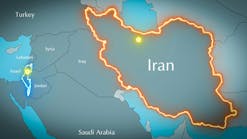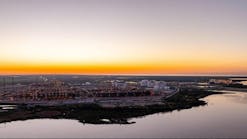At the Gastech '96 conference in Vienna early this month, there was general consensus that natural gas vehicles (NGVs) can compete with gasoline vehicles, given a little government pushing here and there.
However, one paper on Indonesia's experience with compressed natural gas (CNG) taxis highlighted a problem with NGVs that is not normally mentioned in pro-NGV circles.
This was presented by Yusep Caryana, researcher in the gas technology development unit at Indonesia's Research & Development Center for Oil & Gas Technology (Lemigas).
"Lemigas interviewed many taxi drivers who own NGVs," said Caryana, "and we discovered that they preferred to fuel their cars at certain CNG stations. This didn't make sense to us: surely they would just fill their cars whenever they needed to, wherever they were."
Caryana said this choosiness among taxi drivers was viewed as a serious problem, because biases among NGV drivers could inhibit advancement of CNG utilization in Indonesia.
Pressure difference
"To meet expected needs of CNG car drivers," said Caryana, "CNG refueling stations had been placed in numerous locations, at various distances from the natural gas distribution grid. Some are very close to the pipelines, some more than 2 km away."
Lemigas found that taxi drivers had worked out that the further a CNG refueling station was from the pipeline, the less energy each tank full of CNG would contain.
"It was found," said Caryana, "that the total energy of CNG produced per tankful was less when the gas system pressure was lower than the CNG station inlet design pressure."
Caryana told delegates average inlet pressures measured at the stations ranged from 8 bar for a station right beside a gas pipeline to 2.9 bar for one station further away.
"The discharge pressure into the customers' tanks is directly related to station compressor inlet pressure," said Caryana.
"So the effectiveness of some stations was decreased, CNG consumers began to prefer to fuel their cars at certain CNG stations, and this led to a decline in sales from certain CNG stations."
Caryana called for compressor manufacturers to improve the design of their product so that they become more independent of inlet pressure: "This will be hard to do, but I believe compressor suppliers can do it."
Recommendation
Shortly afterwards, a compressor manufacturer addressed the delegates, and after his presentation was asked from the floor how typical are gas supply pressure fluctuations as reported by Caryana.
Ueli Oester, assistant vice president of Sulzer Burckhardt Engineering Works Ltd., Basel, Switzerland, explained that gas pipeline pressure varies from country to country and is even weather dependent, with cold weather leading to lower compressor inlet pressures.
"The problem with low pressure is low flow rate in the compressor," said Oester. "Some ranges of compressor can cope with low pressure, but for best performance, you need an inlet pressure of 15-20 bars."
Copyright 1996 Oil & Gas Journal. All Rights Reserved.

